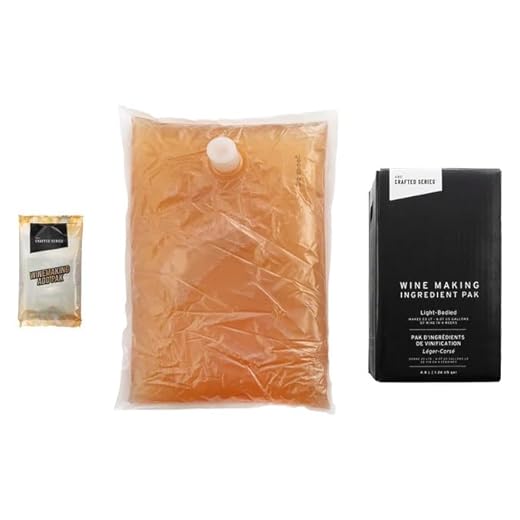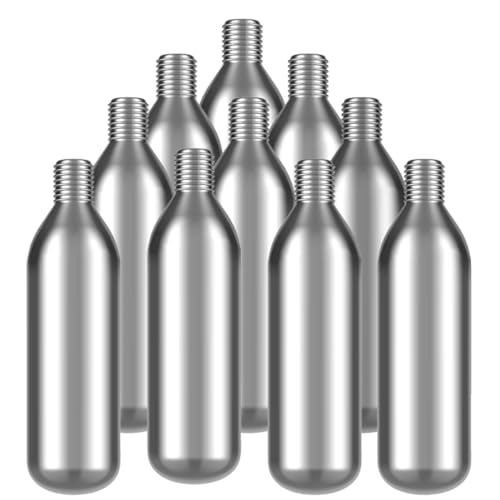



For optimal enjoyment of opened white varietals, aim to consume them within three to five days. After this period, the quality may begin to decline noticeably as oxidation alters the flavors and aromas.
To extend the freshness, store your opened bottle in the refrigerator, ensuring the cork is securely placed back in the neck. This not only preserves the wine’s structure but also minimizes exposure to air, which accelerates deterioration.
Consider using a vacuum pump to remove excess air from the bottle if you anticipate a longer interval before consumption. This simple tool can significantly enhance the lifespan of your favorite sips, allowing you to savor every drop over several days.
Pay attention to the varietal as well; lighter wines like Pinot Grigio may lose their character more quickly than fuller-bodied options such as Chardonnay. Always trust your palate–if the taste has changed significantly, it’s best to part ways.
Storage Tips After Opening
Expect a maximum of five to seven days for optimal enjoyment after uncorking, depending on the specific type. For instance, lighter varietals like Sauvignon Blanc may start to show signs of decline after three days, whereas a fuller-bodied option, such as Chardonnay, can hold its quality longer.
To enhance longevity, re-cork the bottle tightly or utilize a vacuum pump to remove air. Storing the bottle upright minimizes oxidation, while keeping it in a cool, dark place is crucial. Avoid exposure to light or temperature fluctuations, as these factors accelerate spoilage.
For those who appreciate their beverages chilled, consider placing the bottle in the refrigerator. The cooler environment can help slow down the oxidation process, allowing you to savor the flavors longer.
Keep an eye on any changes in aroma and taste. If the once-refreshing notes turn dull or develop an off-putting scent, it’s a sign to part ways. Trust your palate; it’s your best guide in determining the right moment to enjoy or discard.
Factors Affecting the Shelf Life of Opened White Wine
Temperature is a primary influence on the longevity of your opened bottle. Ideally, store it in a cool place, around 45°F to 55°F. Higher temperatures accelerate oxidation, deteriorating flavors and aromas faster.
Exposure to oxygen is another key element. Once a bottle is uncorked, the wine interacts with air, leading to oxidation. Using a vacuum pump to remove excess air can help extend its enjoyable period.
Storage position matters too. Keeping bottles upright minimizes the wine’s contact with the cork, reducing the risk of cork taint and preserving the wine’s integrity.
Varietal characteristics play a role as well. Lighter whites, like Sauvignon Blanc, typically have a shorter shelf life post-opening compared to fuller-bodied options like Chardonnay.
Lastly, closure type impacts preservation. Synthetic corks or screw caps generally provide a better seal than traditional corks, aiding in maintaining freshness.
For a delightful pairing experience, consider exploring how to cook fillet steak in a cast iron skillet.
Best Storage Practices for Opened White Wine
Store your bottle upright to minimize the surface area exposed to air. This helps reduce oxidation, which can spoil flavors.
Maintain a consistent temperature between 45°F and 55°F (7°C to 13°C). Avoid fluctuations, as they can negatively impact quality.
Use a wine stopper or vacuum pump to seal the bottle after pouring. This creates a barrier against oxygen, extending freshness.
Keep the opened bottle away from direct sunlight and heat sources. Ultraviolet light can degrade the wine, while heat accelerates deterioration.
Consider placing the bottle in a refrigerator, even if it’s a red varietal. Cooler temperatures slow down chemical reactions, preserving taste.
Consume within three to five days for optimal enjoyment. Mark the date on the bottle to track freshness easily.
If you notice any off aromas or flavors, it’s best to discard it. Trust your senses; they are reliable indicators of quality.
Experiment with using leftover wine in cooking. It can enhance sauces and marinades, ensuring nothing goes to waste.
Signs That Opened White Wine Has Spoiled
Detecting spoilage is crucial for enjoying your beverage at its best. Look out for the following indicators:
Visual Changes
- Color Shift: A transition from a bright hue to a darker or duller tone suggests deterioration.
- Cloudiness: Any haziness or sediment that wasn’t present before indicates spoilage.
Aroma and Taste
- Odor: A vinegar-like scent often signals oxidation or spoilage.
- Flavor: A flat or sour taste, lacking the original freshness, means it’s no longer good.
Trust your senses; if something seems off, it’s best to err on the side of caution and discard the bottle. Freshness in flavors and aromas is key to a pleasurable experience.
Different Types of White Wine and Their Longevity
Crisp and refreshing varieties such as Sauvignon Blanc can maintain quality for about 3 to 5 days after being uncorked. The high acidity in these wines acts as a natural preservative, allowing them to retain their vibrant character longer.
Chardonnay, particularly those that are oaked, typically remains enjoyable for 3 to 5 days as well. However, the creaminess and complexity may start to fade after the second or third day, especially in warmer temperatures.
Light-bodied vs. Full-bodied Options
Light-bodied selections, such as Pinot Grigio and Moscato, generally keep their appeal for about 3 to 4 days. Their delicate flavors may diminish quickly, so it’s best to consume them sooner rather than later.
In contrast, full-bodied whites like Viognier can last slightly longer, often up to 5 days, due to their higher alcohol content and richer structure. These characteristics help in preserving flavor integrity.
Sweet and Sparkling Choices
Sweet varieties, including Riesling and Gewürztraminer, usually hold up well for about 5 days. The residual sugar content helps maintain freshness, but be mindful of storage conditions to avoid spoilage.
Sparking wines, such as Champagne or Prosecco, are best enjoyed within 1 to 3 days after opening. The bubbles dissipate quickly, impacting the overall experience, so sealing with a specialized stopper can help retain some effervescence.
Understanding the unique attributes of each type aids in making the most of your bottle. Always consider the specific characteristics of the wine you’re enjoying to maximize its lifespan post-opening.
Extend the Freshness of Opened White Wine
To maximize the longevity of your opened bottle, consider vacuum sealing. A dedicated wine vacuum pump removes air, significantly slowing oxidation, which can spoil the beverage. This method can extend enjoyment by several days.
Storing the bottle upright minimizes the wine’s exposure to air. This practice is particularly effective for varieties that are sensitive to oxidation. Pair this with a wine stopper designed to limit air contact for even better results.
Temperature Control
Maintain a consistent and cool temperature. Ideal storage conditions range between 45°F to 65°F. Avoid fluctuations and direct sunlight, as these factors can accelerate degradation.
Refrigeration Benefits
Refrigerate after opening, regardless of your preference for serving temperature. The cooler environment significantly slows down the chemical reactions responsible for spoilage. Even if you plan to serve it at room temperature later, chilling it first is advantageous.
Consider using inert gas wine preservers. These products create a protective layer over the surface of the liquid, preventing oxidation and keeping flavors intact for longer periods.
Lastly, always taste before serving. If the flavor seems off or the aroma has changed, it’s best to discard it. Staying vigilant ensures a delightful experience with every pour.
When to Discard Opened White Wine
Typically, it’s wise to consume opened bottles within three to five days. However, the exact timeframe can vary significantly based on several factors, including the type and storage conditions. If you notice any off-putting aromas or flavors, it’s best to err on the side of caution.
Here are key indicators to guide your decision:
| Indicator | Action |
|---|---|
| Oxidation | Discard if it smells like vinegar or has a flat taste. |
| Foul Odor | Dispose of if there are unpleasant scents reminiscent of wet cardboard. |
| Color Change | If it has darkened significantly, it may be time to let it go. |
| Presence of Sediment | While some wines may have sediment, excessive particles can indicate spoilage. |
| Carbonation | If a still wine has bubbles, it may no longer be good. |
Pay attention to these signs and trust your senses. Your enjoyment is paramount, and if there’s any doubt, it’s safer to discard the bottle than to risk spoiling your meal or gathering experience.
FAQ:
How long can I expect an opened bottle of white wine to last?
An opened bottle of white wine typically lasts about 3 to 5 days when stored properly. To maximize its longevity, it’s best to recap the bottle tightly and store it in the refrigerator. Some wines, especially those with higher acidity, may last a bit longer, while others might start to lose their freshness sooner.
What factors influence the shelf life of opened white wine?
Several factors can affect how long opened white wine lasts. First, the type of wine plays a significant role; lighter wines like Sauvignon Blanc may not last as long as fuller-bodied ones like Chardonnay. Second, exposure to air can lead to oxidation, which deteriorates the wine’s flavor. Storing the wine in a cooler environment, like a refrigerator, can help slow down this process. Additionally, how much wine is left in the bottle can also affect its freshness; a full bottle retains its quality longer than one that is half-empty.
Can I do anything to extend the life of my opened white wine?
Yes, there are several methods to help extend the life of opened white wine. One effective way is to use a wine vacuum pump to remove excess air from the bottle before resealing it. This reduces oxidation and helps preserve the wine’s flavor. Alternatively, consider transferring the wine to a smaller container to minimize air exposure. Keeping the bottle in the refrigerator is also important, as cooler temperatures can slow down the degradation process. Finally, try to drink the wine within a few days for the best taste experience.







